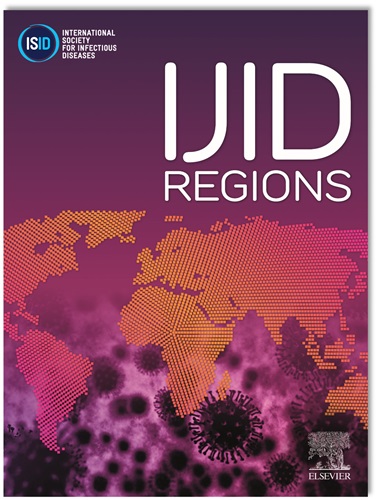High CD4⁺ T-cell responses in seronegative individuals following SARS-CoV-2 exposure during a dormitory outbreak
IF 4.3
2区 医学
Q1 INFECTIOUS DISEASES
引用次数: 0
Abstract
Objectives
We studied individuals who remained uninfected by SARS-CoV-2 despite repeated exposures during a May-July 2020 dormitory outbreak in Singapore.
Methods
We compared immune profiles of those with exposed seronegative (ESN) (negative PCR and serology), with noninfected and infected groups. Following the lifting of quarantine, incident infection rates were compared between the ESN and noninfected cohorts.
Results
The immune profiles of 135 men with ESN (repeated negative PCR and persistent seronegativity), and 98 noninfected men, and 139 infected men were examined (mean age 33 years). Men with ESN exhibited higher percentages of CD4+ T-cells and classical monocytes, alongside increased specific CD4+ T cell responses to the nonstructural protein 12-3 region (NSP12-3) and spike peptides of SARS-CoV-2, compared with noninfection controls. Those with ESN did not differ in their IgG levels against endemic human coronaviruses compared with noninfection controls. Men in the ESN group were found to be less likely to become infected compared with noninfected controls (21% vs 39%, hazard ratio 0.47 [95% CI 0.27-0.73]) after the lifting of quarantine measures.
Conclusions
These findings highlight the possible importance of cellular immunity in conferring partial resistance to infection and support the development of T-cell-focused strategies for high-risk settings.
ClinicalTrials.gov number
NCT04446104
宿舍疫情期间SARS-CoV-2暴露后血清阴性个体CD4 + t细胞高反应
目的:我们研究了在2020年5月至7月新加坡宿舍爆发期间多次接触SARS-CoV-2但未感染的个体。方法:我们比较暴露血清阴性(ESN) (PCR和血清学阴性)、非感染组和感染组的免疫谱。在解除隔离后,比较了ESN队列和非感染队列之间的事件感染率。结果:检测了135例ESN男性(重复PCR阴性和持续血清阴性)、98例未感染男性和139例感染男性(平均年龄33岁)的免疫特征。与未感染的对照组相比,ESN患者的CD4+ T细胞和经典单核细胞比例更高,同时CD4+ T细胞对SARS-CoV-2的非结构蛋白12-3区(NSP12-3)和刺突肽的特异性反应增加。回声状态网络患者与非感染对照组相比,其对地方性人类冠状病毒的IgG水平没有差异。解除隔离措施后,ESN组男性感染的可能性低于未感染对照组(21%对39%,风险比0.47 [95% CI 0.27-0.73])。结论:这些发现强调了细胞免疫在赋予部分感染抵抗力方面的可能重要性,并支持在高风险环境中开发以t细胞为重点的策略。临床试验:Gov编号:NCT04446104。
本文章由计算机程序翻译,如有差异,请以英文原文为准。
求助全文
约1分钟内获得全文
求助全文
来源期刊
CiteScore
18.90
自引率
2.40%
发文量
1020
审稿时长
30 days
期刊介绍:
International Journal of Infectious Diseases (IJID)
Publisher: International Society for Infectious Diseases
Publication Frequency: Monthly
Type: Peer-reviewed, Open Access
Scope:
Publishes original clinical and laboratory-based research.
Reports clinical trials, reviews, and some case reports.
Focuses on epidemiology, clinical diagnosis, treatment, and control of infectious diseases.
Emphasizes diseases common in under-resourced countries.

 求助内容:
求助内容: 应助结果提醒方式:
应助结果提醒方式:


